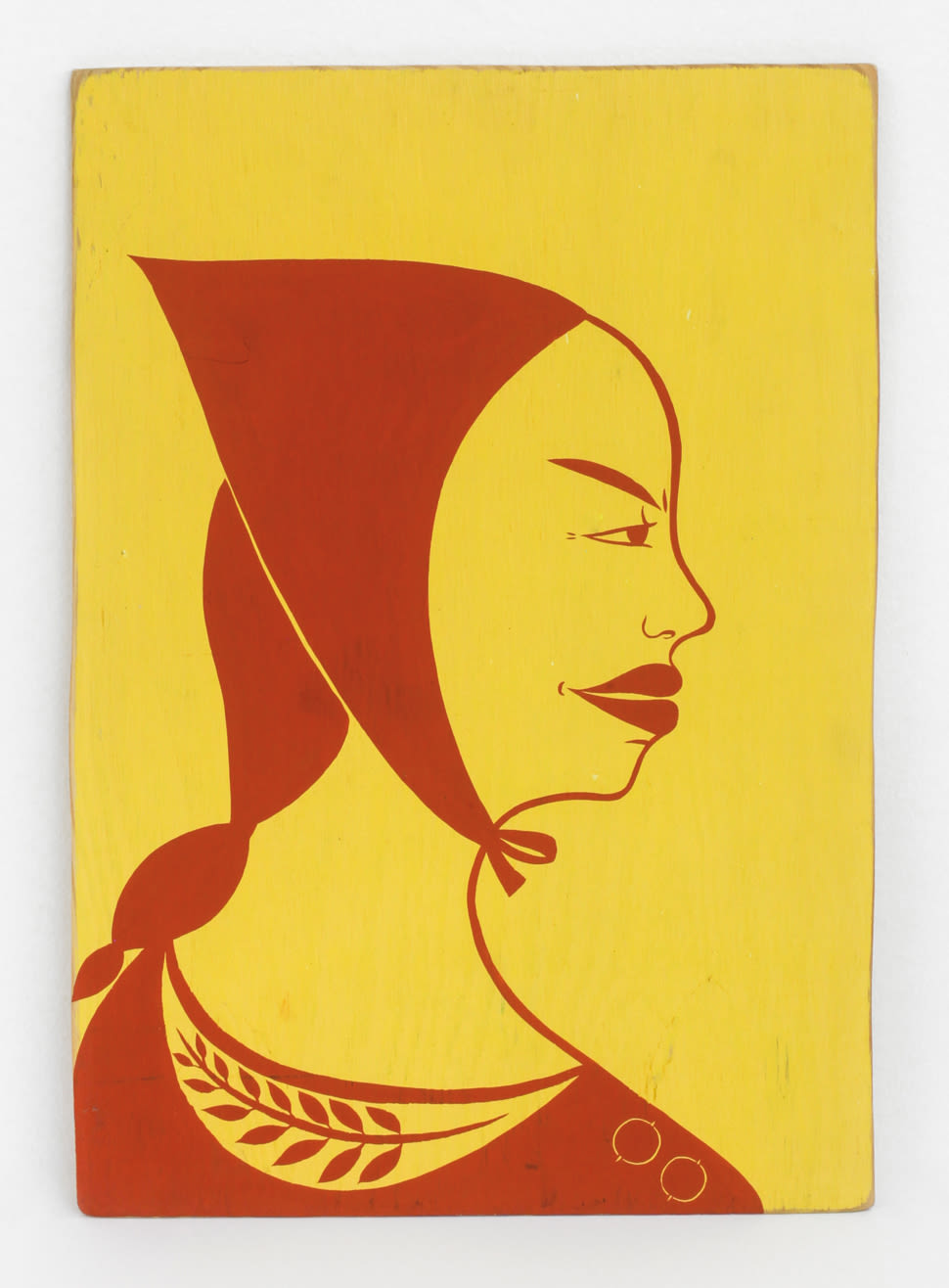Discover This New Margaret Kilgallen Exhibit

Margaret Kilgallen, Untitled, c. 2000
When artist Margaret Kilgallen died in 2001 at the age of 33, she was on the cusp of personal and professional greatness. She had recently completed her MFA at Stanford and had been chosen for a featured installation at New York’s Whitney Museum of American Art. She and her husband, artist Barry McGee, were new parents to baby daughter Asha.
But cancer took Kilgallen without giving her a chance to realize all of that potential. First diagnosed with breast cancer in 1999, the artist kept her illness private. When the disease metastasized during her pregnancy, she focused only on her child. According to Stanford professor Enrique Chagoya, for whom Kilgallen was a teaching assistant during her last year of life, she was gone before friends even knew she was ill.
Eighteen years on, Kilgallen remains a uniquely accessible artist. As an undergraduate, she studied printmaking at Colorado College, developing an appreciation for the nexus between art and craft as she refined her skills in bookbinding and lettering. Art professor Ruth Kolarik remembers Kilgallen as “intensely focused on her art and willing to push the boundaries.”
And push she did. While living in Northern California, Kilgallen worked as a book conservator at the San Francisco Public Library while simultaneously becoming a well-known graffiti artist and public muralist.
The Aspen Art Museum’s new exhibition of Kilgallen’s work (through June 16 ) bridges the gap between binding books and tagging trains, giving insight into a woman whom museum director Heidi Zuckerman describes as “profoundly creative and pretty magical.”
The largest presentation of the artist’s work since 2005, Margaret Kilgallen: that’s where the beauty is., showcases a variety of scale, from faithful reproductions of her large-format wall paintings to heretofore unseen ephemera, including private letters and drawings. The exhibit was curated by Courtenay Finn—who recently left to become chief curator of the Museum of Contemporary Art Cleveland—in cooperation with McGee.
Kilgallen’s work drew on history and folklore. It is also profoundly feminist, as Kilgallen aimed to give form to unique, unsung women. “I do have a lot of heroines,” she stated in a 2000 documentary. “I like to paint images of women who I find inspiring, and I don’t like to choose people that everybody knows. I like to choose people who just do small things and yet somehow hit me in my heart.”
Zuckerman, who was a friend of Kilgallen’s, calls her work “gracious and kind, unusually vulnerable and available to the viewer.” It created a unique bridge between street art and the gallery, which until that time was relatively rare, adds Zuckerman.
Stanford’s Chagoya agrees. “Margaret became a part of popular culture in the Bay Area,” he explains. “She’d wander around the Mission District looking for walls to paint. Soon she was recognized by local curators and was showing her work, taking over big walls. It was quite spectacular.”
Of the mind that art should be made by hand, Kilgallen eschewed mechanical interventions. “My hand will always be imperfect because it’s human,” she explained in 2000. In those imperfections, she found the most interesting elements. As she put it, “When you get close up, you can always see the line waver. And I think that’s where the beauty is.” Almost 20 years later, her legacy still speaks that truth.













































